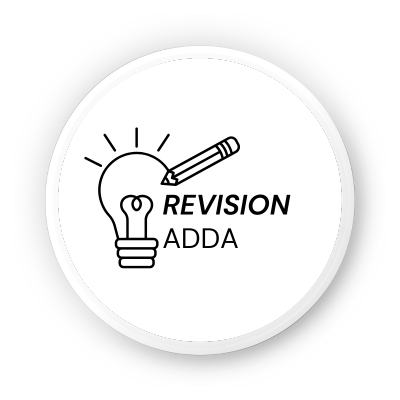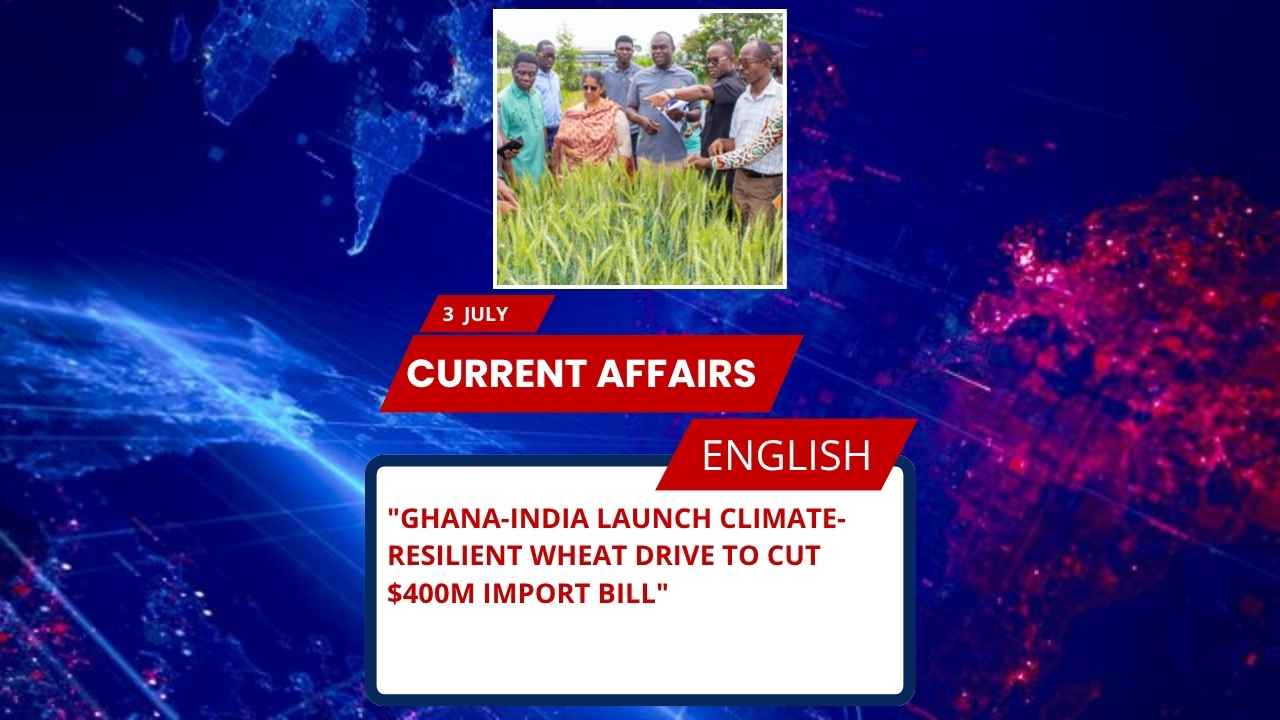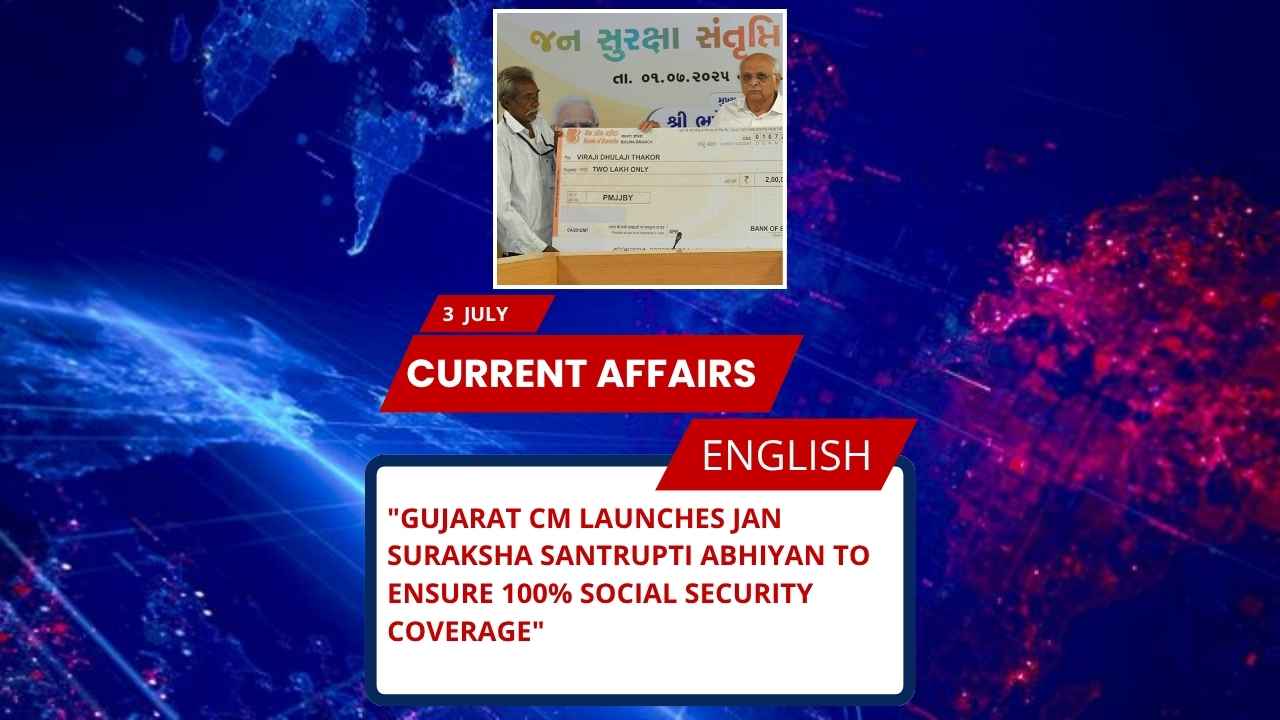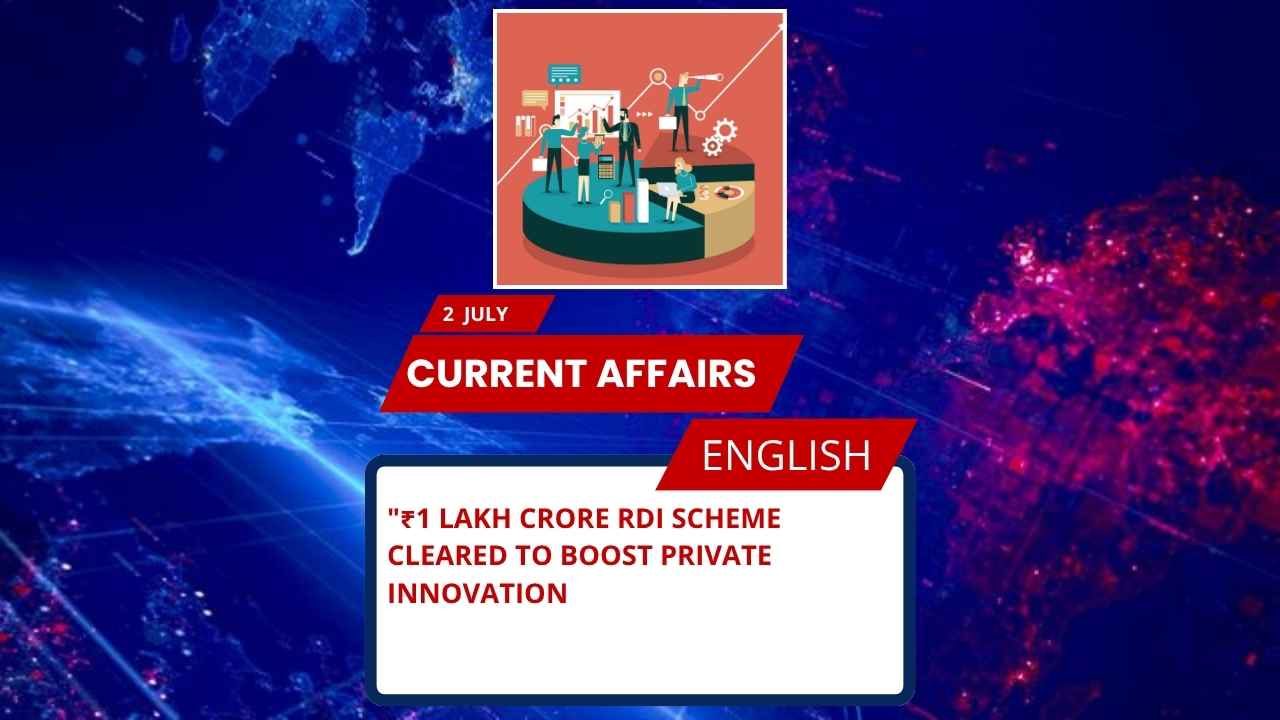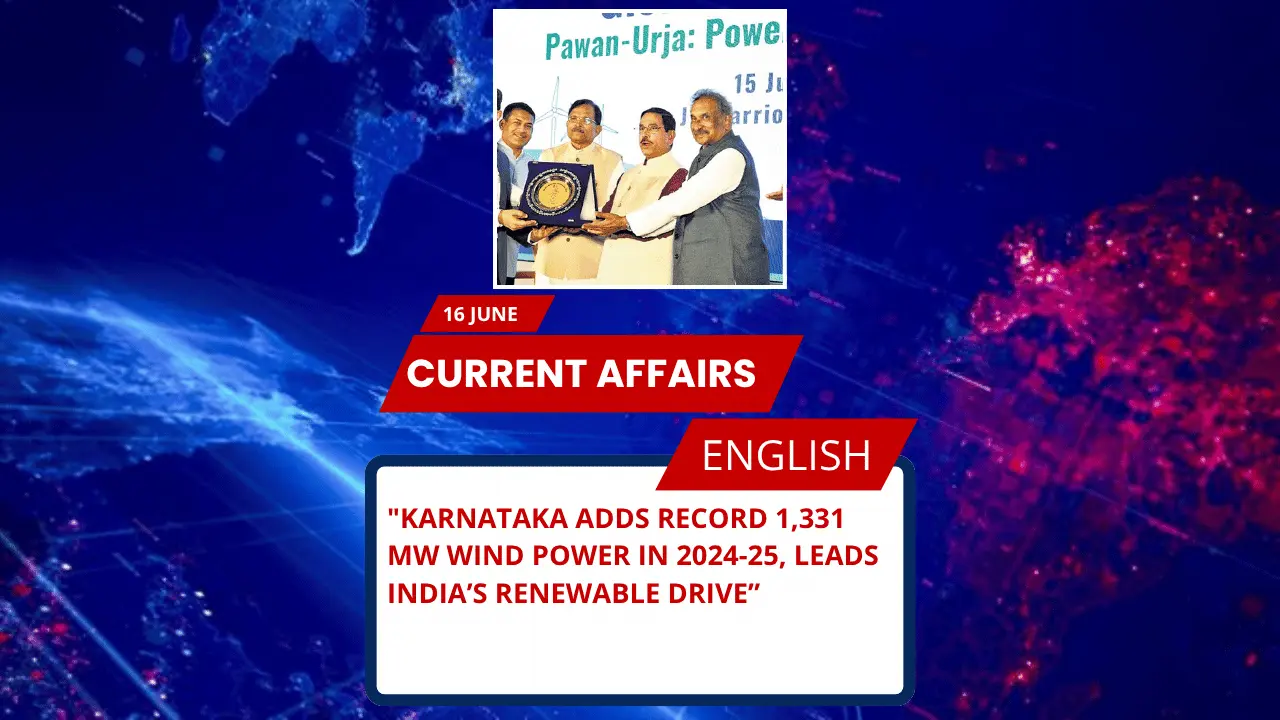
Key Points for SSC, UPSC & Other Govt Exams
- Karnataka added 1,331.48 MW wind power capacity in 2024-25.
- Karnataka’s total wind capacity now stands at 7,351 MW.
- India’s wind power installed capacity: 51.5 GW (4th largest globally).
- India’s renewable energy target: 500 GW by 2030, including 100 GW wind energy.
- Karnataka signed ₹4 lakh crore investments at Global Investors Meet 2025.
- Plans for 17 GW wind power projects, including 5 GW Renewable Energy Cluster Programme.
- India exported 3.5–4 GW wind turbines/modules in 2024-25.
Karnataka’s Renewable Energy Milestone
Karnataka Leads in Wind Power Addition
In the financial year 2024-25, Karnataka emerged as a frontrunner in India’s clean energy sector by adding 1,331.48 megawatts (MW) of wind power capacity. This feat was celebrated during Global Wind Day 2025 in Bengaluru, highlighting Karnataka’s leadership in renewable energy.
The state’s total installed wind power capacity now stands at 7,351 MW, consolidating its position as a key player in India’s green energy mission.
Support to National Targets
India aims to achieve 500 GW of renewable energy by 2030, with 100 GW from wind power (including 30 GW offshore wind). Karnataka’s achievements contribute significantly toward this goal.
Investment and Infrastructure
Major Investments
At the 2025 Global Investors Meet, Karnataka attracted investment commitments worth ₹4 lakh crore, nearly 40% of the state’s total investments. These are earmarked mainly for wind and renewable energy projects.
Infrastructure Development
- Over 17 GW of wind power projects planned.
- More than 5 GW to come under the Renewable Energy Cluster Programme.
- Over 20 new substations and 400 KV corridors are being developed for better grid integration.
India’s Global Standing in Wind Energy
India ranks as the 4th largest wind power producer globally, with 51.5 GW installed capacity. The country also exported 3.5 to 4 GW of wind turbines and modules during 2024-25.
The Way Forward
- Focus on 24×7 power supply and grid stability.
- Integration of wind, solar, and pumped storage systems.
- Promote competitive electricity tariffs and domestic manufacturing.
Important Facts About Karnataka
- Capital: Bengaluru
- Chief Minister (2025): Siddaramaiah
- Governor (2025): Thawarchand Gehlot
- Major National Parks: Bandipur, Nagarhole, Bannerghatta, Kudremukh
- Major Rivers: Krishna, Kaveri, Tungabhadra
- Important Events: Global Investors Meet, Global Wind Day
Exam-Style MCQs
Q1. Karnataka added how much wind power capacity in 2024-25?
A) 1,000 MW
B) 1,331.48 MW
C) 1,500 MW
D) 2,000 MW
Answer: B) 1,331.48 MW
Q2. What is India’s target for renewable energy capacity by 2030?
A) 300 GW
B) 400 GW
C) 500 GW
D) 600 GW
Answer: C) 500 GW
Q3. India ranks ____ in the world for installed wind power capacity.
A) 2nd
B) 3rd
C) 4th
D) 5th
Answer: C) 4th
Q4. What is Karnataka’s total installed wind power capacity as of 2025?
A) 5,500 MW
B) 6,000 MW
C) 7,351 MW
D) 8,000 MW
Answer: C) 7,351 MW
UPSC-style FAQs (Answer in Mains-type format)
Q1. Discuss the role of Karnataka in India’s wind energy sector and its contribution to national renewable targets.
Answer:
Karnataka has emerged as a leading state in India’s wind energy sector, significantly contributing to the national renewable energy targets. In 2024-25, Karnataka added 1,331.48 MW of wind power capacity, bringing its total installed capacity to 7,351 MW. This addition represents a major share of India’s annual wind capacity growth. Karnataka’s proactive policies, investor-friendly environment, and focus on infrastructure—such as the development of substations and high-capacity corridors—support the country’s goal of achieving 500 GW of renewable energy by 2030, including 100 GW from wind. The state’s Renewable Energy Cluster Programme and substantial investments (₹4 lakh crore) highlight its strategic role in strengthening India’s green energy ecosystem.
Q2. Examine the challenges and opportunities in integrating wind energy into India’s power grid.
Answer:
The integration of wind energy into India’s grid presents both challenges and opportunities. One key challenge is ensuring grid stability due to the intermittent nature of wind power. This necessitates investments in energy storage solutions like pumped storage systems and better forecasting mechanisms. Opportunities include the scope for hybrid projects that combine wind, solar, and storage, thereby offering round-the-clock power supply. Additionally, domestic manufacturing of wind turbines under Make in India, and competitive tariff structures, can bolster the growth of wind energy while addressing energy security and sustainability concerns.
Q3. What policy measures are essential to accelerate wind power development in India?
Answer:
To accelerate wind power development, India must focus on several policy measures:
- Strengthening grid infrastructure — ensuring adequate transmission capacity through high-voltage corridors.
- Promoting hybrid and storage-based projects — integrating wind with solar and storage to provide firm power.
- Supporting domestic manufacturing — incentives for local production of turbines and components to reduce costs and reliance on imports.
- Ensuring regulatory clarity and ease of doing business — clear policies on land acquisition, grid connectivity, and power purchase agreements are vital.
- Encouraging investments — through financial incentives, viability gap funding, and facilitating long-term PPAs (Power Purchase Agreements).
